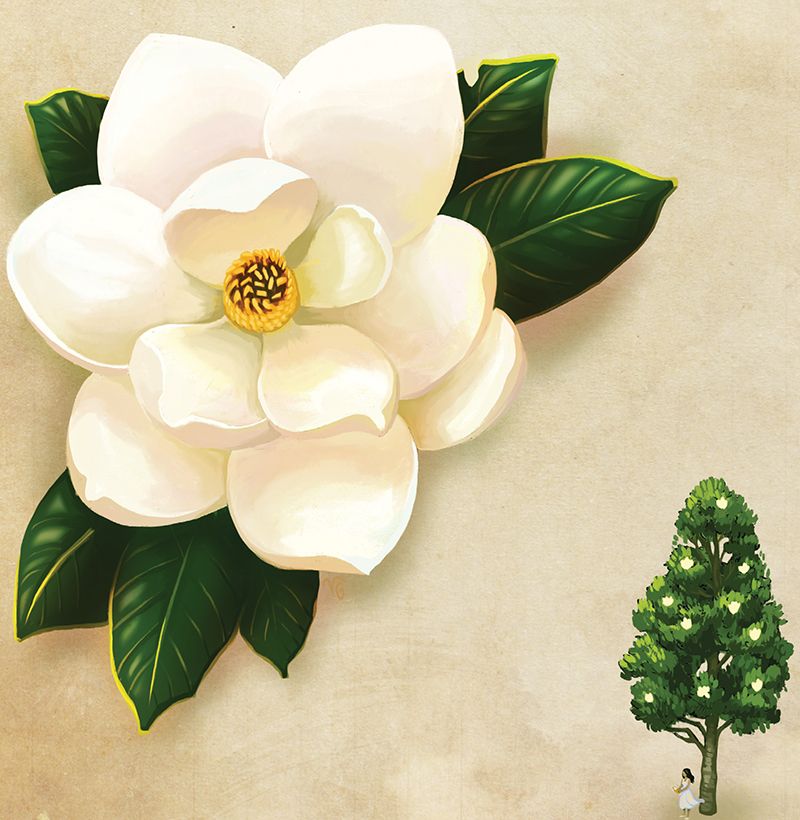Bring on the magnolia blooms! This month, Magnolia grandiflora’s immense flowers open, filling the air with their signature sweet fragrance. Think you know everything there is to know about the quintessential Southern tree? You just might be surprised by what you learn about its forbearers and modern-day relations, as well as its role in Gullah folklore

Ageless Beauty The magnolia is ancient. In 1990, researchers announced that they’d extracted DNA from a 17- to 20-million-year-old leaf found in Idaho (at what is considered the best-preserved Miocene Epoch plant fossil site in the world) that very closely matched today’s Magnolia grandiflora.
Wax & Shine Both the flowers and leaves have a glossy, wax-like coating that not only helps prevent beetle damage but aids in resistance to salt spray. The lustrous leaves have long been popular in Lowcountry floral arrangements.
Super-Sized Magnolias can grow 50 feet wide, and their roots may reach three times as far as their limbs. Measuring up to a foot in diameter, the blossoms produce a sugary scent that attracts pollinators—primarily beetles, who set to work helping the trees reproduce long before bees existed.
Ghost Story An old Gullah tradition holds that the magnolia’s white blooms are the spirits of the dead and departed. Because of this, it was once rare to find these trees growing in the yard of a Gullah family. This folklore may be the reason Edgar Allan Poe used a tall magnolia to mark the buried pirate treasure in his Lowcountry-set tale ”The Gold-Bug.”
Family Tree Named for French botanist Pierre Magnol, the Magnoliaceae family includes hundreds of species that live around the world. Eight call South Carolina home, including saucer and sweetbay magnolias, yet M. grandiflora is likely the most cultivated—and beloved.
Feeding the Flock Cone-like seedpods form within the flowers, and shiny red seeds appear from September to November. High in fat content, the seeds are a ready food source for birds, plus mammals like squirrels and opossums. As an evergreen, the southern magnolia also provides excellent year-round shelter for wildlife, not to mention perennial beauty in the landscape.